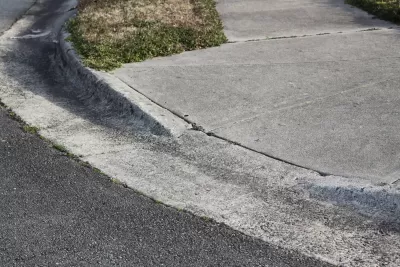Twenty-five years have passed since the United States approved a civil rights law with broad and positive affect on the build environment as we've come to know it.

"A quarter-century after the law's passage, the [Americans with Disabilities Act (ADA)] has transformed the way we approach the built environment for people with disabilities and has inspired architects, and the general public, to keep broadening the way they define accessibility," according to an article by Patrick Sisson.
Sisson adds:
"In the process, many have discovered that more accessible design creates a better environment for everyone. Something as simple as a now-commonplace curb ramp makes mobility easier for cyclists, skateboarders, parents pushing strollers, and those with physical impairments. By removing barriers, inspiring advances in accessible design, and asking architects to focus even more on the diversity of human experience, the act changed the way we think about and build public spaces."
The long read article begins with the description of some of the tactics used by the advocates who succeeded in convincing Congress to pass the bill in 1990, a discussion of the legal details of the ADA, and the impact of the law on the architecture profession (which includes the development of best practices that go beyond minimum conformance with the standards of the ADA).
FULL STORY: The ADA at 25: How One Law Helped Usher in An Age of Accessible Design

Planetizen Federal Action Tracker
A weekly monitor of how Trump’s orders and actions are impacting planners and planning in America.

Maui's Vacation Rental Debate Turns Ugly
Verbal attacks, misinformation campaigns and fistfights plague a high-stakes debate to convert thousands of vacation rentals into long-term housing.

Restaurant Patios Were a Pandemic Win — Why Were They so Hard to Keep?
Social distancing requirements and changes in travel patterns prompted cities to pilot new uses for street and sidewalk space. Then it got complicated.

In California Battle of Housing vs. Environment, Housing Just Won
A new state law significantly limits the power of CEQA, an environmental review law that served as a powerful tool for blocking new development.

Boulder Eliminates Parking Minimums Citywide
Officials estimate the cost of building a single underground parking space at up to $100,000.

Orange County, Florida Adopts Largest US “Sprawl Repair” Code
The ‘Orange Code’ seeks to rectify decades of sprawl-inducing, car-oriented development.
Urban Design for Planners 1: Software Tools
This six-course series explores essential urban design concepts using open source software and equips planners with the tools they need to participate fully in the urban design process.
Planning for Universal Design
Learn the tools for implementing Universal Design in planning regulations.
Heyer Gruel & Associates PA
JM Goldson LLC
Custer County Colorado
City of Camden Redevelopment Agency
City of Astoria
Transportation Research & Education Center (TREC) at Portland State University
Jefferson Parish Government
Camden Redevelopment Agency
City of Claremont





























